 Cannabis Grow Guide by Royal Queen Seeds
Cannabis Grow Guide by Royal Queen Seeds
- Growing cannabis step by step
- Cannabis growing basics
- Choosing your seeds
- How to germinate seeds
- The cannabis vegetative stage
- The cannabis flowering stage
- Harvesting cannabis
- Trimming, drying, and curing
- Choosing pots and soil
-
Growing indoors
- A Complete Overview Of Growing Cannabis Indoors
- Cannabis Cultivation Tips: How To Set Up Indoor Grow Lights
- How Many Cannabis Plants Can You Grow Per Square Metre?
- Indoor Cannabis Growing: Relative Humidity and Temperatures
- Hydroponics Cannabis Growing Guide (with diagrams)
- Cannabis Micro Growing: Growing Great Weed in Tiny Spaces
- Growing outdoors
- How to grow autoflowering cannabis
- Cannabis nutrients and pH
- Cannabis troubleshooting: Nutrients
-
Cannabis troubleshooting: Growing
- Cannabis Seed Germination — Troubleshooting Guide
- How to Deal With Pythium (Root Rot) in Cannabis Plants
- Slow Cannabis Plant Growth And What You Can Do About It
- How to Deal With Leggy Cannabis Seedlings
- Watering Your Cannabis: How to Fix Overwatering and Underwatering
- Understanding Male, Female, And Hermaphrodite Cannabis
- Identifying and Treating Common Cannabis Ailments
- How To Revive a Sick Cannabis Plant
- How to Avoid Mouldy Weed During Drying and Curing
- How to Prevent and Treat Dry and Crispy Cannabis Leaves
- What Cannabis Leaves Can Tell You
- Causes and Solutions for Yellow Cannabis Leaves
-
Cannabis Strains Grow Report
- HulkBerry Automatic Grow Report
- Blue Cheese Auto Grow Report
- Purple Punch Automatic Strain Grow Report
- Triple G Automatic Grow Report
- Do-Si-Dos Automatic Grow Report
- Green Gelato Automatic Grow Report
- Haze Berry Automatic Grow Report
- Purple Queen Automatic Grow Report
- Cookies Gelato Automatic Grow Report
- Sherbet Queen Automatic Grow Report
- Sweet Skunk Automatic Grow Report
- Medusa F1 Grow Report
- Cannabis plant training
-
Weed growing tips
- The Cannabis Plant Anatomy
- How to preserve seeds
- How Much Sunlight Do Outdoor Cannabis Plants Need To Grow?
- How to Control and Prevent Stretching in Cannabis Plants
- My Cannabis Plants Are Growing Too Tall: What Should I Do?
- Should You Worry About Purple Or Red Cannabis Stems?
- What To Do When Your Indoor Cannabis Won’t Flower
- How To Protect Your Cannabis Plants From Heat Stress
- How To Tell If Your Female Cannabis Plant Has Been Pollinated
- Growing Medical Marijuana
- Bud Washing: How to Clean Your Weed
- Understanding Cannabis Yield per Plant
Cannabis Plant Anatomy: From The Bottom To The Top
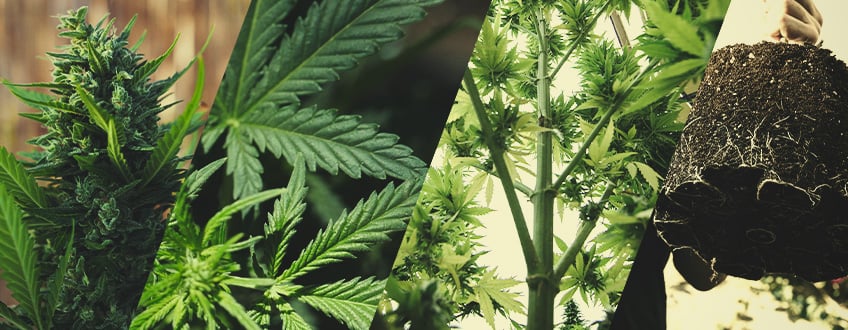
Contents:
Without a doubt, cannabis claims the title as one of the most beautiful plants on Earth—from its glittering trichomes and signature leaves to its complex root system. Many growers frequent their grow rooms just to stand in awe at what grows before them.
Although the flowers get most of the attention—and rightly so—every part of this complex species has a critical and interesting function. As a cultivator, it helps to familiarise yourself with the anatomy of the cannabis plant. In doing so, you’ll develop an eye for what your plant requires, what it needs less of, and when to harvest.
Explore our in-depth guide below to see the cannabis plant like never before.
MYCORRHIZAE
Although not genetically part of the cannabis plant, mycorrhizae form a mutually beneficial relationship with cannabis roots that helps both species survive and thrive. These fungi appear all throughout nature and form a fascinating symbiotic relationship with up to 90% of plant species.
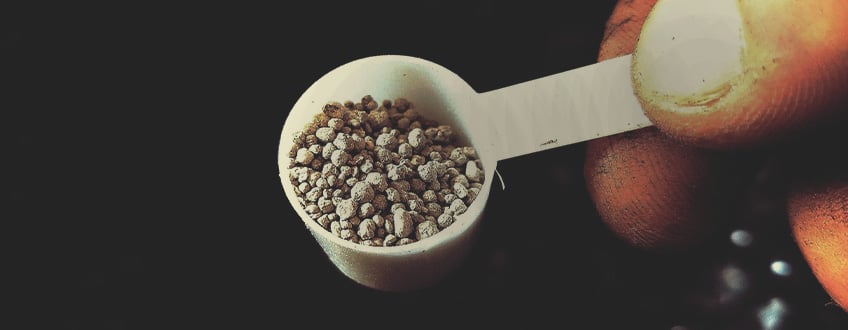
FUNCTION
Mycorrhizal fungi participate in a give-and-take relationship with cannabis plants. These species form networks of thin, hair-like filaments in the soil—known as mycelium—and produce enzymes to break down organic matter.
After liberating nutrients from the substrate, the mycelium uptakes and shuttles them around to plants. Because cannabis roots aren’t capable of this impressive function themselves, they have to “bargain” with the mycelium to access these nutrients. Luckily, plants produce sugars during photosynthesis, and transport many of these molecules down into the roots. Here, they swap these energy-rich exudates for the nutrients they need to fulfil important physiological functions.
Mycorrhizae ultimately act as an extension of the root system. Not only do they break down organic matter to release nutrients, but they also transport these important molecules from areas plants could otherwise not reach. Ultimately, mycorrhizal fungi play a fundamental role in plant nutrition and soil biology and chemistry.
Learn actionable tips about plant care and the environment they thrive in with our Grow Guide.
Free RQS
Grow Guide!

LOCATION
This fusion between plant and fungi occurs in the rhizosphere, or root zone. The mycelium forms a sheath-like structure around the root tip that surrounds plant cells in the root cortex. Threads of hyphae—individual strands of mycelium—extend out into the soil where they break down organic matter and even connect one plant to another, forming a biological network.
HOW TO BOOST MYCORRHIZAE PRODUCTION
Mycorrhizal fungi exist naturally in many different types of soil. However, there are numerous different species. To make the most of this synergistic relationship, introduce tried and tested mycorrhizal fungi products when planting or transplanting.
SEEDS
Without seeds, there would be no cannabis. These small packets of life pass down DNA to the next generation to ensure harvests for years to come.
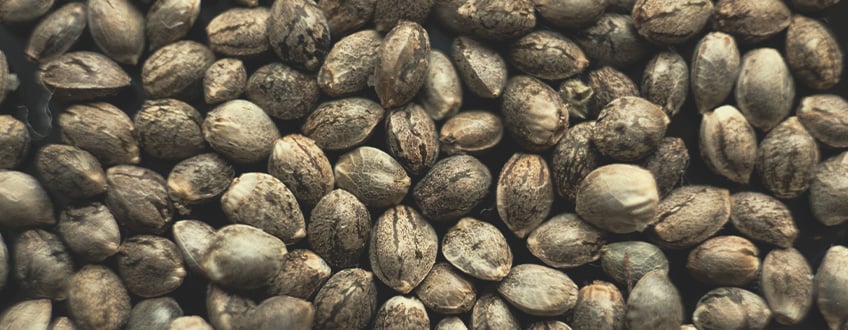
FUNCTION
After fertilisation, female cannabis plants begin to form a single cell or zygote. After a short time, this cell divides into two cells, and then four—doubling in size rapidly. After significant cellular multiplication, the seed forms a multicellular structure in the form of an embryo.
This structure consists of an embryonic root—the radicle—an embryonic shoot, and two cotyledon leaves. When dispersed by nature or the hand of man, seeds germinate if conditions are right. They need significant humidity and relative darkness to spring forth into life.
LOCATION
Cannabis seeds take shape within the blossoms, commencing their journey ensconced within a follicle resembling a teardrop, distinguished by its hairy nature. Once the maturation stage is reached, this protective casing unravels, unveiling a sturdy, brown-hued seed primed for dissemination.
WAYS TO CARE FOR CANNABIS SEEDS
The hairy bract keeps cannabis seeds safe until they’re ready to be displaced from the flower. Growers need to keep their plants well-watered and fed during this time.
Only harvest seeds when they are fully mature. Younger seeds appear small and light beige in colour. Older seeds are large, dark brown, and often feature a striped pattern. Remove the seeds by hand and store them in an airtight bag or mason jar.
ROOTS
Roots are an essential part of cannabis plant anatomy. The root system supports the plant and keeps it hydrated, and conducts far more complex and vital functions to boot.

FUNCTION
Cannabis roots fulfil numerous functions paramount to plant survival. They absorb water needed to transport nutrients, and they store food. Have you ever experienced the horror of watching your crops endure a windy storm? You can thank the root network for keeping them firmly anchored in the ground.
The roots also act as a communication platform through which plants can dictate the microbial world of the rhizosphere. The roots don’t just take up free-floating nutrients from the soil. Many nutrients are locked up in the organic matter. They need beneficial organisms—bacteria, fungi, worms—to liberate these molecules.
Plants create sugars during photosynthesis, and a lot of these sweet chemicals are released into the rhizosphere by the roots. These sugars attract bacteria that linger around the root zone. After they perish, the bacteria release liberated nutrients that roots can now uptake. Plants also trade sugars with mycorrhizal fungi (mentioned above), life forms capable of degrading organic matter.
Yes—plant roots effectively farm microbes. Incredible, right?
LOCATION
The roots reside at the base of the stem. They extend out into the soil and form a weaving network of tendrils that keep plants secure, hydrated, and well-fed.
ROOT CROWN
The stem arises from the upper part of the root system, known as the root crown. This portion of the system features anatomical differences from the rest of the roots. Because of the change from root to stem tissue, a shift in the vascular system occurs at this point. Root crowns also need to be slightly exposed to take in oxygen, another element vital to plant life.
WAYS TO CARE FOR CANNABIS ROOTS
Growers often face issues with roots when it comes to watering. Overwatering leads to poor water and nutrient uptake and root rot. Underwatering will starve your plants as they attempt to transport nutrients.
As a general rule of thumb, place your finger into the soil to assess its moisture level. Only water your cannabis plants once the top 3cm of soil is completely dry. You can also care for roots by utilising air pruning. By growing cannabis in fabric pots, you’ll help your plants develop a dense and aerated root mass.
THINGS TO CONSIDER WITH CANNABIS ROOTS
Cannabis plants become root bound when they’re left to grow in a small container. This can lead to nutrient deficiencies and unsteady, underdeveloped plants. Always make sure to transplant on time and up-pot to the right size.
Roots aren’t alone in the soil. They share their home with millions of microbes. Although some of these critters are friendly, others can wreak havoc. Pythium, a root pathogen, can attack roots and even kill entire plants. As such, you’ll want to learn how to keep your growing medium free of the disease.
WHAT CAN YOU DO WITH CANNABIS ROOTS AFTER HARVEST?
Wait! Before you throw your roots into the compost pile, you should be aware of their impressive benefits. Cannabis roots contain an array of chemicals[1] that various cultures have used for centuries (if not millennia) to make teas and tinctures.
However, the alkaloids within the roots aren’t suitable for everyone. Consult your doctor before brewing a batch of root tea.
COTYLEDONS
These tiny leaves are the first sign of cannabis plant growth after germination. They emerge from the soil as two small leaves, although sometimes they arrive as triplets. These structures lead the charge when it comes to photosynthesis, and drive the early period of seedling growth.
Eventually, the first true leaves will emerge from the middle of the cotyledons. As the plant matures, the cotyledons will turn yellow, die, and drop off onto the soil below.

STEM
Cannabis stems offer above-ground support and house nodes and branches. This central column allows cannabis plants to grow directly upwards while branches shoot out laterally.

FUNCTION
The stem lends structure and shape to the plant. It offers leaf-bearing branches support and allows foliage to conduct photosynthesis. The stem also contains xylem, water-carrying tissue that starts in the roots and extends into all areas of the plant.
SHAPE
Cannabis stems are rigid and sturdy. They grow directly upwards and can become quite large. Some larger sativa strains develop a longer stem that looks more like wood than soft plant tissue.
CAN STEMS BE TRAINED?
Growers often top plants and create two main stems through techniques such as main-lining. Other methods, such as LST, manipulate the stem to grow parallel to the ground, causing each branch to surge upwards. Training stems comes with many benefits, including enhanced productivity, light exposure, and aeration.
WHAT CAN YOU DO WITH CANNABIS STEMS AFTER HARVEST?
Believe it or not, cannabis stems contain a small amount of cannabinoids. This means they deserve more than a space on the compost pile. You can use stems to make concentrates, teas, THC butter, and even cannabis liquor.
BRANCHES
Without branches, cannabis plants would essentially be a stick. These offshoots form a dense canopy loaded with resinous flowers.

FUNCTION
Branches play a supportive role, protruding from the main stem and providing structure for leaves to conduct photosynthesis. The branches also contain xylem and shuttle water and nutrients to leaves and flowers.
LOCATION
Branches shoot off from the main stem, starting near the base of the plant all the way to the top.
NODES AND INTERNODES
Nodes are the points at which branches meet each other or the main stem. Cannabis flowers form at these important anatomical sites. The sections between each node are known as internodes.
Stipules
After thousands of years of cultivation, humanity has learned a whole lot about the cannabis plant. However, some elements of the herb still remain a mystery, including aspects of its anatomy. Stipules are small, leaf-like appendages that form at the nodes of cannabis plants—where the branches intersect with the main stem.
Stipules occur either in pairs or alone and have a sharp, thin, dagger-like appearance. Because they occur at the same site as pistils, growers sometimes confuse these structures as the first signs of flowering.
Botanists have yet to confirm the exact role of stipules, although they are thought to play a role in protecting new leaf shoots.
CAN BRANCHES BE TRAINED?
Just like stems, growers can train branches to increase yield and improve the overall structure of the plant. Super cropping helps growers achieve these results, but the technique can be quite risky at times. Learn how to fix broken stems in case things go sideways.
WHAT CAN YOU DO WITH CANNABIS BRANCHES AFTER HARVEST?
Branches contain a low cannabinoid count and share a similar texture to stems. Use them in the same way as stems to produce teas, extracts and even mulch.
FAN LEAVES
These large leaves help plants produce as much energy as possible while also enabling them to breathe.
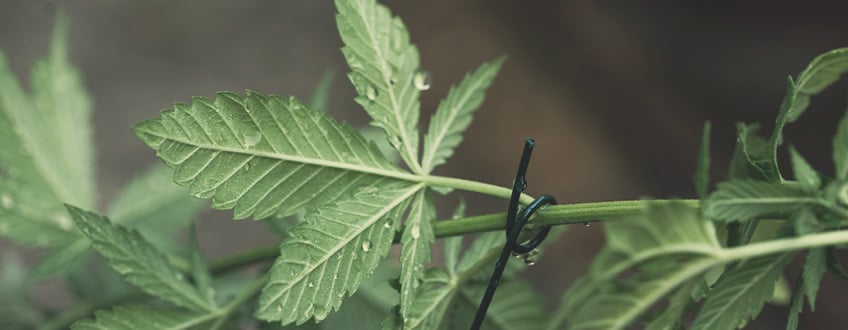
FUNCTION
Fan leaves are the largest type of leaf found on cannabis plants. These structures are instantly recognisable, and are the powerhouse behind photosynthesis. They also possess small openings known as stomata that assist with transpiration and CO₂ uptake.
LOCATION
Fan leaves are positioned along all of the branches that shoot off from the main stem.
SHAPE
Cannabis fan leaves differ depending on the morphology of a particular strain. Sativa-dominant strains tend to possess fan leaves with nine thin fingers. Indica leaves often feature seven fingers that are much broader. Ruderalis plants feature small fan leaves with only five fingers, two of which are much smaller and reside near the leaf’s stem.
WHAT CANNABIS FAN LEAVES CAN TELL YOU
Experienced growers count on fan leaves to communicate the health status of their plants. Discolouration and wilting or curling can let growers know which nutrients are missing, or if a plant is over- or underwatered.
CAN FAN LEAVES BE TRAINED?
The removal of fan leaves—known as defoliation—is common in the training regime of many growers. Taking away unnecessary fan leaves improves aeration, increases light exposure, and cuts mould risk.
WHAT CAN YOU DO WITH CANNABIS FAN LEAVES AFTER HARVEST?
After flowers, fan leaves are the second most important resource derived from cannabis plants. They contain a small amount of cannabinoids and can be used to make:
- Hash
- Extracts
- Tinctures
- Teas
- Raw smoothies
- Salads
SUGAR LEAVES
When staring at your precious cannabis flowers, you’ll notice they’re surrounded by small, spiky leaves. These are sugar leaves. Although small, they are just as vital as their larger counterparts.

FUNCTION
As biological solar panels, sugar leaves also conduct photosynthesis. They grow out of mature flowers and serve as protective leaves due to the abundance of trichomes that protect the plant and contain the cannabinoids and terpenes that ward off potential predators.
LOCATION
Sugar leaves protrude from cannabis flowers. Some varieties feature minimal sugar leaves, whereas others possess colas dominated by these structures.
SHAPE
Sugar leaves are spiky and long, almost like the shape of a spearhead.
WHAT CAN YOU DO WITH CANNABIS SUGAR LEAVES AFTER HARVEST?
Sugar leaves got their name from the frosty, sugar-like coating that occupies their surface. The trichomes responsible for this glistening aesthetic produce impressive levels of cannabinoids—not as much as the flowers, but more than any other part of the plant. After trimming your flowers, you can use sugar leaves to make:
- Bubble hash
- Cannabutter
- Kief
TRIMMING
After harvesting your flowers, you’ll need a pair of trimming scissors to remove all of the sugar leaves to make nicely manicured buds. You have two options: You can trim them right away, a practice known as wet trimming, or wait until they’re dry.
FLOWERS
Cannabis flowers: the main reason growers put seeds in the ground. These dank blossoms possess all of the phytochemicals cultivators crave—from psychoactive cannabinoids to tasty terpenes.
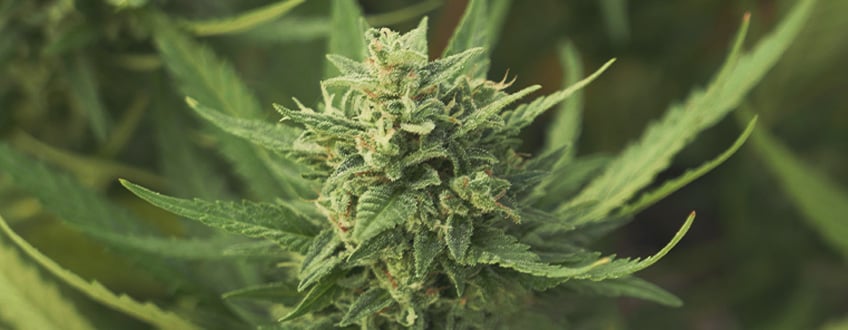
FUNCTION
Cannabis flowers are the reproductive organs of female plants. They possess a structure that, when fertilised by pollen, begins to form seeds.
LOCATION
Cannabis flowers form at the nodes of stems and branches.
DIFFERENTIATION BETWEEN MALES, FEMALES, AND HERMAPHRODITES
Of course, not all plants are female. Male plants don’t produce flowers. Instead, they churn out pollen sacs that split open and disperse pollen into the air. When this substance lands on female flowers, they’ll become fertilised and begin to form seeds.
Although cannabis has distinct male and female plants, sometimes specimens can possess both male and female reproductive organs. This can happen due to environmental stress or genetics. These plants are known as hermaphrodites.
POPCORN BUDS
Growing cannabis flowers doesn’t always go to plan. Genetics, poor light exposure, and other environmental conditions can lead to smaller and inferior “popcorn buds”, which you’ll want to learn how to avoid.
WHAT CAN YOU DO WITH CANNABIS FLOWERS AFTER HARVEST?
You can utilise the cannabinoids from cannabis flowers in any way possible. Experiment with all of the following to discover your favourite:
- Smoking
- Vaping
- Extracts
- Oils
- Edibles
- Teas
CALYXES
Cannabis colas look like one complete unit, but they’re actually made up of many different small parts, including calyxes.
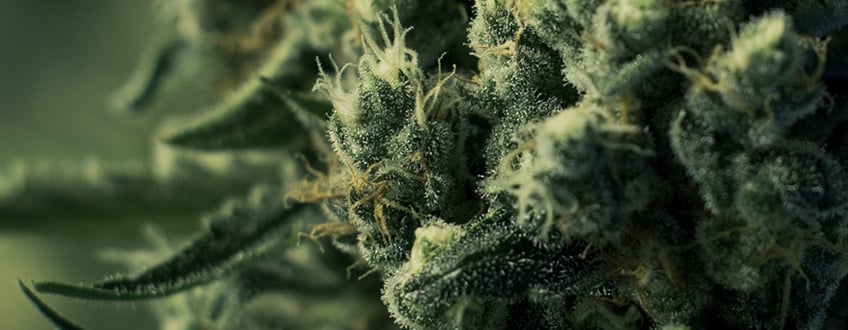
FUNCTION
This teardrop-shaped structure guards the reproductive organs of the female flower. It sits at the base of the flower and peels back as the flowers begin to mature. You’ll see them first appear as pre-flowers just before the flowering stage starts.
LOCATION
Calyxes form nestled in the nodes as plants make the transition from the vegetative phase to the flowering stage.
PISTILS AND STIGMAS
Pistils and stigmas are also included in the microstructures that compose the female reproductive organs of the cannabis plant's flowers.
Pistils are a sexual apparatus of cannabis flowers, featuring a single ovule, enclosed by bracteoles and bracts, and two hair-like structures growing at the tip, called stigmas.

FUNCTION
Pistils are a sexual apparatus of cannabis flowers, featuring a single ovule that gives rise to two protruding stigmas.
Stigmas are hair-like structures protruding from the calyx, fully exposed to the air. They stand straight and strong, in hopes that a few pollen particles might fly their way.
WHAT CANNABIS PISTILS AND STIGMAS CAN TELL YOU
Growers can look to the colour of pistils to ascertain how mature their cannabis plant has become. Young flowers possess white, slightly greenish hairs that turn to deep orange, brown, or red when the buds are ready to harvest.
You can also inspect pistils to see if a male has fertilised your plant. To do so, use a pair of tweezers and lightly peel back the bract at the base of the structure.
TRICHOMES
Trichomes are what makes cannabis so unique. These glands produce all of the phytochemicals that led to the cultivation of cannabis in almost every country on Earth.

FUNCTION
Trichomes are small, mushroom-shaped glands that occupy the surface of cannabis flowers and leaves. They churn out a resin rich in cannabinoids, terpenes, and flavonoids. In nature, plants produce these secondary metabolites to protect them against pests and excessive heat. The resin also helps pollen stick to the flowers.
The magic happens in the bulbous trichome head. Here, high levels of THC, CBD, and terpenes such as myrcene, caryophyllene, and pinene are produced. Trichomes produce vastly different levels of these phytochemicals depending on the strain.
CAN TRICHOMES BE TRAINED?
Not “trained” exactly, but influenced, yes. Growers can boost trichome levels using a number of techniques, including genetic selection, soil quality, lighting, and controlled stress.
WHAT CANNABIS TRICHOMES CAN TELL YOU
Aside from signalling just how dank a flower will become, trichomes also help growers identify when to harvest their flowers. Transparent trichomes show that flowers are still young and premature. Over time, they’ll develop an opaque and milky appearance. When they become mostly milky, with a few taking on an amber colour, it’s time to harvest.
WHAT CAN YOU DO WITH CANNABIS TRICHOMES AFTER HARVEST?
You can dislodge trichomes from the surface of flowers to create high-potency concentrates that provide more intense effects and superior flavours. You can use trichomes to make:
- Cannabis Pharmacology: The Usual Suspects and a Few Promising Leads - PubMed https://pubmed.ncbi.nlm.nih.gov
Grow Cannabis With RQS
 Grow Guide Topic Finder
Grow Guide Topic Finder
- Growing cannabis step by step
- Cannabis growing basics
- Choosing your seeds
- How to germinate seeds
- The cannabis vegetative stage
- The cannabis flowering stage
- Harvesting cannabis
- Trimming, drying, and curing
- Choosing pots and soil
-
Growing indoors
- A Complete Overview Of Growing Cannabis Indoors
- Cannabis Cultivation Tips: How To Set Up Indoor Grow Lights
- How Many Cannabis Plants Can You Grow Per Square Metre?
- Indoor Cannabis Growing: Relative Humidity and Temperatures
- Hydroponics Cannabis Growing Guide (with diagrams)
- Cannabis Micro Growing: Growing Great Weed in Tiny Spaces
- Growing outdoors
- How to grow autoflowering cannabis
- Cannabis nutrients and pH
- Cannabis troubleshooting: Nutrients
-
Cannabis troubleshooting: Growing
- Cannabis Seed Germination — Troubleshooting Guide
- How to Deal With Pythium (Root Rot) in Cannabis Plants
- Slow Cannabis Plant Growth And What You Can Do About It
- How to Deal With Leggy Cannabis Seedlings
- Watering Your Cannabis: How to Fix Overwatering and Underwatering
- Understanding Male, Female, And Hermaphrodite Cannabis
- Identifying and Treating Common Cannabis Ailments
- How To Revive a Sick Cannabis Plant
- How to Avoid Mouldy Weed During Drying and Curing
- How to Prevent and Treat Dry and Crispy Cannabis Leaves
- What Cannabis Leaves Can Tell You
- Causes and Solutions for Yellow Cannabis Leaves
-
Cannabis Strains Grow Report
- HulkBerry Automatic Grow Report
- Blue Cheese Auto Grow Report
- Purple Punch Automatic Strain Grow Report
- Triple G Automatic Grow Report
- Do-Si-Dos Automatic Grow Report
- Green Gelato Automatic Grow Report
- Haze Berry Automatic Grow Report
- Purple Queen Automatic Grow Report
- Cookies Gelato Automatic Grow Report
- Sherbet Queen Automatic Grow Report
- Sweet Skunk Automatic Grow Report
- Medusa F1 Grow Report
- Cannabis plant training
-
Weed growing tips
- The Cannabis Plant Anatomy
- How to preserve seeds
- How Much Sunlight Do Outdoor Cannabis Plants Need To Grow?
- How to Control and Prevent Stretching in Cannabis Plants
- My Cannabis Plants Are Growing Too Tall: What Should I Do?
- Should You Worry About Purple Or Red Cannabis Stems?
- What To Do When Your Indoor Cannabis Won’t Flower
- How To Protect Your Cannabis Plants From Heat Stress
- How To Tell If Your Female Cannabis Plant Has Been Pollinated
- Growing Medical Marijuana
- Bud Washing: How to Clean Your Weed
- Understanding Cannabis Yield per Plant
Categories
Grow Cannabis With RQS
Nutrients and boosters





























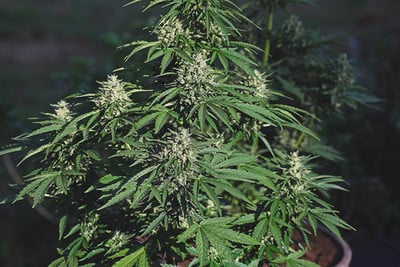
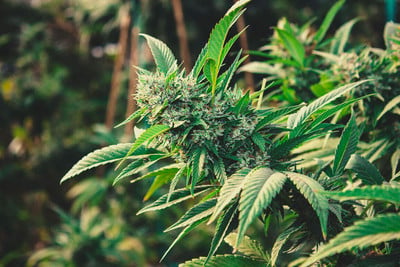
.jpg)








